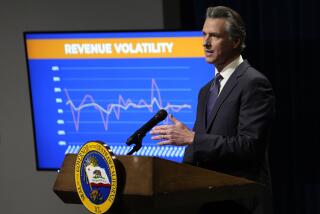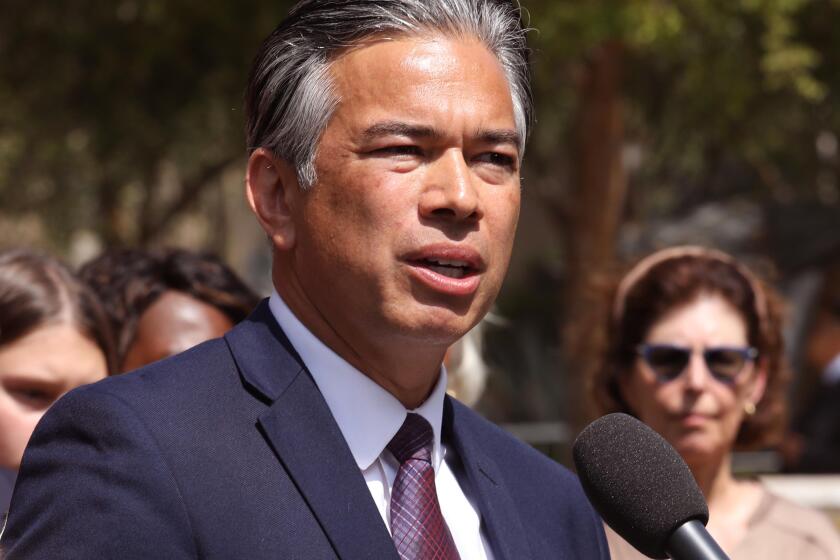Working Class Has Earned a Tax Break
- Share via
During a parliamentary debate, young Winston Churchill derided a Tory’s avowals of sympathy toward labor. “The Tories love the working man,” chided Churchill. “They love to watch him work.” The same may be said today of California’s governing establishment.
In 1991, Californians suffered the largest tax increase ever imposed by a state: $8.2 billion in new fees and taxes took $1,100 from the earnings of an average family. Of these levies, $4 billion came through a massive hike in the state sales tax, which fell disproportionately on working-class Californians. Another $500 million came by repealing the renters’ tax credit, increasing taxes on mostly low-income workers.
In the intervening years, wealthy Californians enjoyed a $1.3-billion tax cut when upper-income tax brackets expired at the end of 1995. Corporations received a 5% income tax cut last year; another 10% is budgeted for 1998--more than $650 million when fully phased in. In 1993, special interests and corporations received $600 million in tax credits; working-class families have received virtually no tax relief.
It is not populist hyperbole to observe that the history of California in this decade has been one of massive tax increases on working families and massive tax breaks for the rich and for corporations.
The state Department of Finance announced in its annual “May revise” that an unexpected surge in personal income tax collections has produced a windfall of $2.3 billion, including an extra $960 million for the current fiscal year, and roughly $1.3 billion more in permanent new revenues.
With these unanticipated riches, the governor and Legislature could finally provide genuine and long overdue tax relief for working-class Californians. Republicans could demonstrate that they are as committed to family tax relief as they are to corporate aid. Democrats could renew credentials with working families, credentials that have been tarnished by years of slavish devotion to big government.
Simply by forgoing funds the state never expected to receive, California could double the standard deduction, effectively shielding the first $25,000 of a couple’s personal income from any state tax. That means 1.4 million taxpayers who are struggling the most to make ends meet would be exempt from any state income tax at all. It means a tax cut for 7 million taxpayers, or $200 for most families.
The advantages should be obvious. At a time when federal welfare reforms make it imperative that welfare recipients move swiftly into entry-level jobs, it makes sense to exempt their meager earnings from taxation. A single mother with two children currently pays tax on income over $20,000. By more than doubling the standard deduction, her first $28,000 of earnings would be tax-exempt. In an economy where two-thirds of growth depends on consumer spending, most families would have $200 more for that long-postponed purchase.
Instead, despite a razor-thin general fund reserve of just eight-tenths of 1%, the Wilson administration initially proposed that the entire multibillion-dollar windfall be rolled into ongoing state spending. Under the provisions of Proposition 98, virtually all of it would go to the public schools, adding more than three times the funds generated by the state lottery.
Since the May windfall announcement, both the governor and legislative leaders have hinted that they want to do “something” for working families, but privately they fear the formidable and insatiable public school establishment, to which almost all new money must go because of Proposition 98. The same law makes it impossible to use the new revenues to repay funds that were siphoned from the state pension system, as ordered by the state Supreme Court last week. The new money can only go to schools or taxpayers.
But the schools already won their battle in January. The governor’s original budget provided a spending increase of $1.5 billion, or 8% above last year--an increase lauded at the time by the state’s educational-industrial complex.
Under the January budget proposal, California would commit nearly $6,000 per student from local, state and federal sources--enough to reduce class size to 20 students at every grade level and to support each classroom with $120,000, assuming the funds actually reached the classroom. This is more than twice the $3,000 in inflation-adjusted per pupil expenditures in Gov. Pat Brown’s last year in office.
California’s revenues have grown 25% in just three years. Every segment of California government, and especially the schools, have profited. Tax cuts have relieved every segment of California taxpayers, except for the working-class ones.
Now working families should tell Sacramento it’s their turn.
More to Read
Get the L.A. Times Politics newsletter
Deeply reported insights into legislation, politics and policy from Sacramento, Washington and beyond. In your inbox twice per week.
You may occasionally receive promotional content from the Los Angeles Times.










